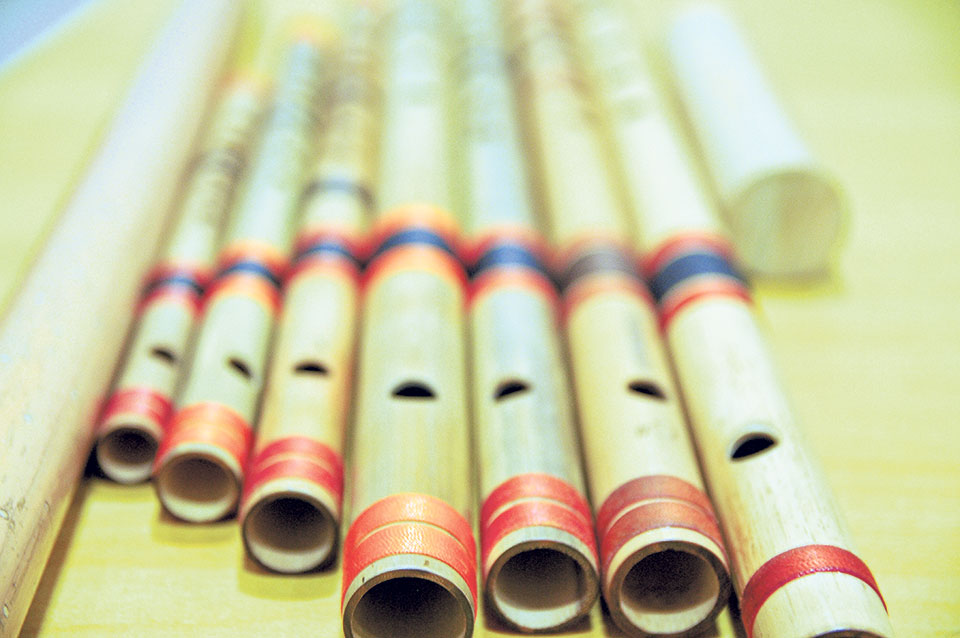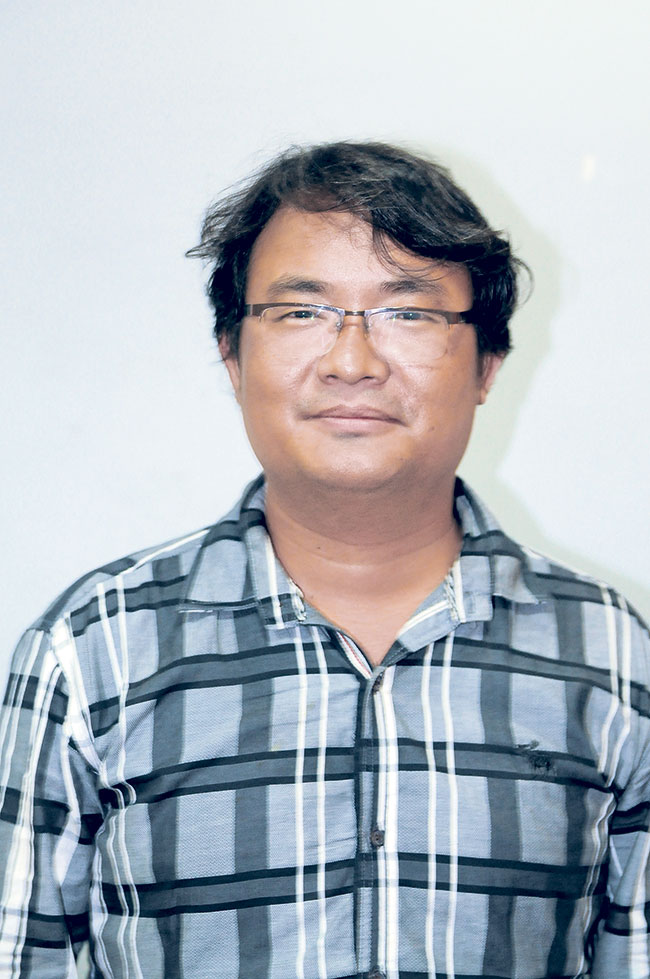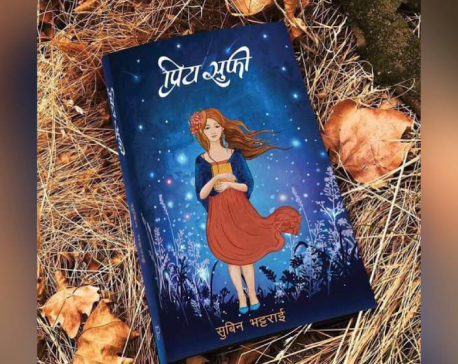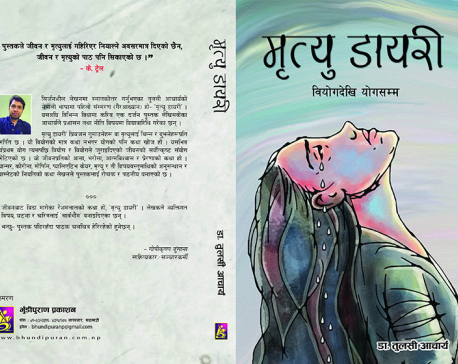
OR

“My parents would often panic if I misplaced my flute. They knew it was my most prised possession.”
 “Local fetes were exciting times for children in the villages of Sarlahi,” says Buddha Lama recollecting his childhood memories. “But my eyes would mostly wander around looking for the flute seller,” adds the man who had already made more than 30,000 professional flutes when I met him. In the span of 15 years, he has become one of the finest flute makers of the country.
“Local fetes were exciting times for children in the villages of Sarlahi,” says Buddha Lama recollecting his childhood memories. “But my eyes would mostly wander around looking for the flute seller,” adds the man who had already made more than 30,000 professional flutes when I met him. In the span of 15 years, he has become one of the finest flute makers of the country.
Lama came to Kathmandu to become a professional flutist after finishing high school. “I was known as the flute boy in my village,” says Lama. “My parents would often panic if I misplaced my flute. They knew it was my most prised possession.”
Kathmandu was a city of hope for him. He came to the capital in search of a guru who would guide him in his journey of becoming a flutist. “I was inspired by Sushil Biswakarma who was a flute legend from my neighbouring Village Development Committee,” says Lama. “From him I learnt that we could make our living by pursuing our passion, which pushed me to come to Kathmandu,” he explains adding he was never interested in the traditional agricultural practices of his village. While others dreamt of increasing their agricultural production, Lama would often take his flute to the field and practice in order to create a beautiful melody.
After coming to Kathmandu, Lama realised that to become a professional flutist one needed at least 23 different kinds of flutes. At that time, professional flutes were not made for commercial purpose in Nepal and had to be brought from India.
It was extremely difficult to get even a perfectly scaled flute in Nepal. “After working for a few months, I had enough money to go to India and buy a flute,” says Lama. “One flute from India was surely not enough, I still needed more flutes to become a professional flutist,” he adds. Impatient to pursue his passion, Lama then decided to make a set of 23 flutes on his own as traveling all the way to India every time he needed a new flute didn’t seem feasible.
“I asked the flute sellers at Indra Chowk to provide me with a plane bamboo out of which I made my first flute,” says Lama. “Luckily, I met Prem Rana Aautari, a senior flute player, after I finished making my first flute. He liked my flute and asked me to make one for him.” That was the beginning of Lama’s long journey of being a flute maker.
Actually, Lama had never intended to sell his flutes. But he could not reject Aautari’s proposal. “He gave me more money than I expected for the flute I made for him,” says Lama. Eventually the demand for his flutes rose and that became his profession. “Even after 15 years I have not completed the set of 23 flutes I initially intended to make for myself,” says Lama with a smile playing on his lips.
Making flutes, however, is far from easy. The bamboo used to make flutes could not be found in Nepal. So Lama had to go to Assam every time he got orders to make flutes. “Even today, the bamboo for flutes comes from India,” exclaims Lama sadly. “To solve this problem, I have planted bamboos in Sindhupalchok. It should be ready in four to five years.”
Lama feels it is his responsibility to let Nepali flutist have access to high quality flutes made in Nepal. “I will make flutes as long as I can because my country needs it,” he says adding he feels he has a special connection with bamboo.
Although Nepali bamboo cannot make good flutes, he intends to utilize the bamboo by making various other instruments. While he makes flutes from bamboo imported from Assam, a variety of other instruments such as rain stick, whistle and shaker are made from Nepali bamboo.
According to Lama, flute is an extremely attractive instrument and it has now been able to make space for itself in Hollywood as well. His flutes are exported to numerous countries in Europe, South America and the USA. In Asia, his flutes have reached India and Japan. The flute that he makes is a north Indian flute that is tweaked in Nepali style making it quite different than the one popular in Newari culture.
“The flute is a unique instrument as it allows you to play the exact tune that is in your head. Most instruments don’t have the ability to do that,” he says.
Unfortunately, despite flutes gaining popularity, Lama is extremely pessimistic about the future of Nepali instruments. Flutes manufactured in Nepal have a good market but Lama is worried that some traditional Nepali instruments are on the verge of extinction. “Instruments unique to Nepal such as Mauri Baja have to be conserved,” he says adding that academia, media, and the musicians themselves have to play an important role in preserving them.
However, on the bright side, he feels proud that more and more people are interested in learning and playing the flute now. “15 years ago when I started making flutes there were only a handful of flutists in our country,” he says. “Now there are thousands and many more are learning,” says Lama.
Perhaps the fact that flutes don’t have to be imported from India anymore is one of the reasons behind the rising interest in this traditional instrument. But whatever the case be, Lama says that he and three outher flute-making enthusiasts whom he trained have been able to deliver all their orders on time. And, by doing so, he believes he is contributing to keep traditional music alive.
You May Like This

Life is never too pointless to be ended
"Priye Sufi," a book by Nepali author Subin Bhattarai, is a moving and consoling book. The story's primary lesson is... Read More...

'ULFA: The Mirage of Dawn’ offers a remarkably balanced narration on history of ULFA
Rajeev Bhattacharyya’s book offers a remarkable history of ULFA, its formation and rise to prominence, the interplay of its principal... Read More...

Mrityu Diary: A must read book about life and death
"Mrityu Diary" or the “Death Diary” is a book written by the author Tulasi Acharya, which is currently available in... Read More...




Just In
- Health ministry to conduct ‘search and vaccinate’ campaign on May 13
- Indian customs releases trucks carrying Nepali tea, halted across Kakarbhitta
- Silent period for by-election to begin from midnight
- SC issues short-term interim order to govt and TU not to take immediate action against TU legal advisor Khanal
- National consultation workshop advocates to scale up nutrition smart community in Nepal
- Patan High Court issues short-term interim order to halt selection process of NTB’s CEO
- NEPSE inches up 0.15 points; daily turnover increases to Rs 2.53 billion
- Bagmati Govt mandates tri-lingual signboards in offices














Leave A Comment